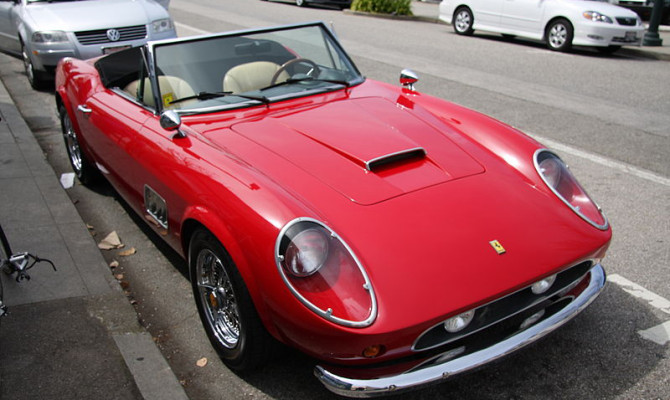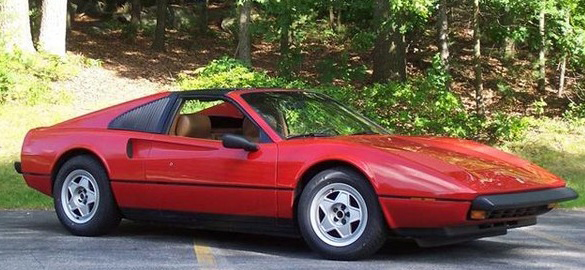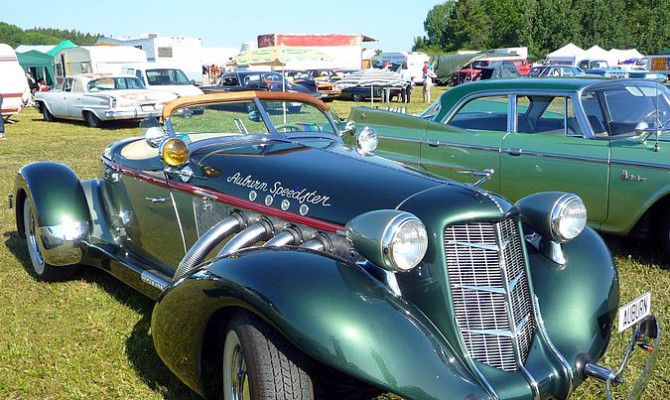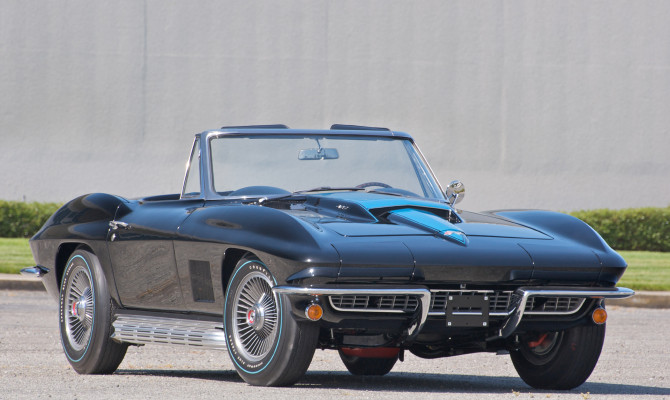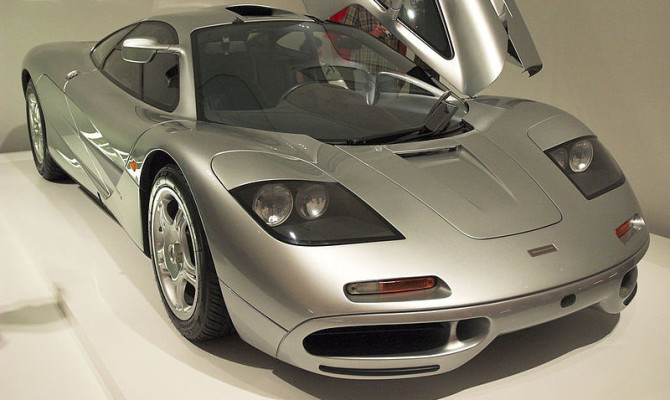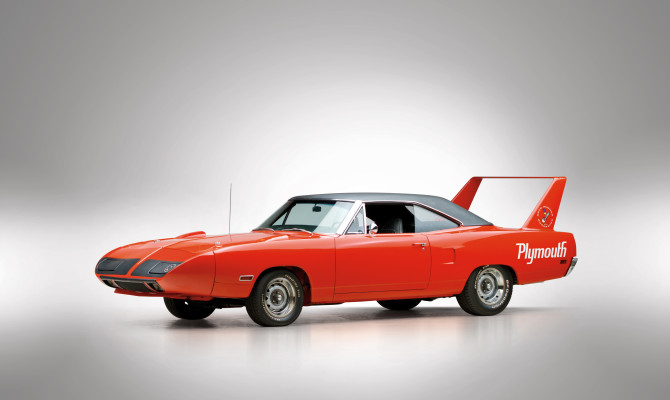Replicas are all good fun unless someone tries to pass one off as the real deal…
The classic car world is full of “coulda, shoulda, woulda” stories of people who had the opportunity to buy something when it was affordable only to see it sail out of reach.
If you didn’t buy a Shelby Cobra during the Nixon administration for 10 Grand, the only alternative for most people today is a replica. Replicas are all good fun unless someone tries to pass one off as the real deal. Here are five of the most common classic car counterfeits:
The Cobra might just be the most desirable sports car on the planet. Not coincidentally, it’s also the most replicated. With bulging, macho good looks; a big block Ford V-8; side pipes; shattering performance; and only around 300 originals made, it was a certainty from almost the beginning that supply and demand would never be equal. The originals have always commanded good money — by the late 1970s, they were approaching $50,000, and around that time, cottage industries sprang up everywhere to build Cobra replicas. Some were quite good while others bordered on undriveable. A lot depended on the skill (or lack thereof) of the builder.
Even Carroll Shelby, the car’s original creator, got into the act. Some argue that the 1992 Dodge Viper was the ultimate tribute to the Cobra. Fortunately, it’s really hard to pass off one of the replicas as the real deal; the Shelby Club maintains a registry of the real cars by serial number and history
*We believe that every classic car has a story. Tell us yours here.*
2. 1955 Porsche 550 Spyder
The 550 Spyder (of James Dean death car fame) and the more common bathtub-like Porsche 356 Speedster have a long history of being replicated. Vancouver company Intermeccanica makes very high quality Speedster replicas, while Beck in the U.S. has a great reputation for making 550 Spyder replicas. Because the originals were alloy and steel, respectively, and the replicas are fibreglass, there’s no danger of one being passed off as the real thing. Real 550 Spyders are $4 million or so and Speedsters can bring more than $300,000. Replicas can be had for around $30,000, which combined with the fact that they’re quite fun to drive explains their appeal.
3. 1961 250 GT Ferrari California Spyder
Before Ferrari got serious about cracking down on violations of its intellectual property rights, its products were among the most commonly knocked-off cars on the planet. A very bogus California Spyder built by a company called Modena Industries shot to fame as the hero car in “Ferris Bueller’s Day Off.”
About 50 were built between 1987 and 1989, before Ferrari said “basta!” Real ones start at about $9 million.
After the “Ferris Bueller” car, the Ferrari with the most screen exposure was the red Ferrari 308 GTS that Tom Selleck drove on “Magnum P.I.” Conveniently, as the 308 reached the apex of its fame via the TV show, Pontiac came out with the mid-engine Fiero, whose space frame design combined with non-stressed removable plastic body panels made it the ideal platform for conversions designed to simulate far more expensive mid-engine exotics. The most famous (or perhaps infamous) of these was the MERA, a replica of the Ferrari 308. While the proportions were off and the interior screamed cheap, we suspect that most of the then 20-something barflies taken in by the guy with gold chains and a polyester Hawaiian shirt driving the bogus 308 never suspected a thing.
5. 1935 Auburn 851 Speedster
Other than a slew of neoclassics that vaguely replicate Mercedes-Benzes of the 1930s, pre-war cars are seldom faked. But the Iconic Indiana-built Auburn Speedster (along with its equally stunning sister the Cord 810/812) is an exception. Lost count of how many companies have built replicas over the last 40 years are so. Like the Cobras, some are quite good and some exhibit the build quality of a Sochi hotel room. A replica Speedster featured in the opening scene of “Indiana Jones and the Temple of Doom.”
Rob Sass is the vice-president of content for Hagerty Insurance. Hagerty is the world’s leading specialist provider of classic car and boat insurance. Learn more at hagerty.ca and you can email rsass [at] hagerty [dot] com
The 1976 Porsche 911 Turbo Carrera is probably the one most capable of preventing the fulfillment of one’s automotive bucket list…
With baby boomers seemingly more aware of their own mortality these days, “bucket lists” of things to do before one’s demise have become increasingly popular.
Here are five of the cars everybody should drive before kicking the bucket, taking the big dirt nap, biting the dust or, well, you get the idea:
1. 1967 Corvette L88
The L88 was the Corvette that ordinary civilians weren’t supposed to be able to buy. Rather, it was built to be taken racing by “privateers” (GM was still observing a ban on manufacturer supported racing). Although a regular production option, the L88 was expensive and came with almost no creature comforts. The horsepower was deliberately underrated on the option sheet to come in below the regular 427-cubic-inch 435-hp engine to further discourage Average Joe buyers. In reality, the L88 could make over 500 hp on racing fuel. Acceleration was shattering. It’s the ultimate classic Corvette Sting Ray.
2. 1967 Shelby Cobra 427
Carroll Shelby found that there was almost no spindly little British sports car that couldn’t be improved with the insertion of an American V-8. Under Shelby’s direction, the Sunbeam Alpine became the Sunbeam Tiger, and the AC Ace became the vaunted Shelby Cobra. The baddest version of the Cobra sported a 427-cubic-inch engine that was similar to the one developed for NASCAR. Cobras are hot, noisy and cramped, but they’re really the greatest expression of the muscle car ethos—cram the largest possible engine into the smallest package.
3. 1992-98 McLaren F1
The F1 was everything a supercar should be but so seldom is. Many modern supercars are as much a fashion accessory as a car. Nobody ever bought an F1 as a bauble. Because of the car’s somewhat minimalist nature, and the fact that it was offered only with a conventional three-pedal manual transmission, posers didn’t apply. It’s a reasonable certainty that Kanye West doesn’t own an F1. With three seats and a center driving position, plus reams of Formula One technology and incredible performance (0-60 in 3.2 seconds, ¼ mile in 11.6 and a top speed of 241 mph), the F1 is the one supercar that should be on any automotive bucket list.
4. 1976 Porsche 930
Of all the cars on this list, the earliest version of the Porsche 911 Turbo Carrera (otherwise known as the 930) is probably the one most capable of preventing the fulfillment of one’s automotive bucket list. Early 930s were somewhat diabolical cars with tires that were a bit too small and a turbocharger that lit up suddenly and with a vengeance. The turbo’s abrupt nature could make for scary driving at inopportune times (like the apex of a corner). But it’s the car’s ability to bite back that can make it so much fun and a genuine accomplishment to master.
5. 1970 Plymouth Road Runner Hemi Superbird
The Superbird appeals to anyone with a “stick it to the man” sensibility. It’s whole reason for being was to introduce the streamlined nose cone and giant wing into Chrysler’s NASCAR efforts back when NASCAR still had homologation requirements for race cars. Although available with Mopar’s excellent 440-cubic-inch V-8, it’s the 426 Hemi that belongs on anyone’s automotive bucket list. Between the view over the long hood and nose cone and the view out the back with the five-story-tall wing, the Superbird driving experience is like nothing else.
Recent Comments
- { Enjoyed your Forest of Bowland in the BMW X5M, particularly the photo of the BMW in front of the main part of Stonyhurst College where... }
- { Bantam designed the Jeep, not Willy's or Ford. The American military gave the original Bantam prototype to Willys and Ford to copy. There is plenty... }
- { All Escalades come with a 6.2-lilter V8 engine that produces 420 horsepower. A six-speed automatic is the only transmission offered and drives the rear wheels.... }
- { Alexandra is an excellent journalist. }
Popular Posts
- Journey to a ‘Sparkling’ Luxury Okanagan Resort “Four lucky readers will put a Dodge Journey’s weekend-...
- The Need For Speed: Hike Those Highway Limits More than half of those polled believe the province sho...
- Drives-U-Crazy… Erratic drivers. An early morning drive from Kelowna to Vancouver is nor...
- Readers Respond: The Pros and Cons of Increasing B.C. Speed Limits Increasing the speed limits will only increase risk to...
- Honda CR-V Review: The Compact Crossover To Get Things Done The CRV is a very stylish and aerodynamic crossover veh...




